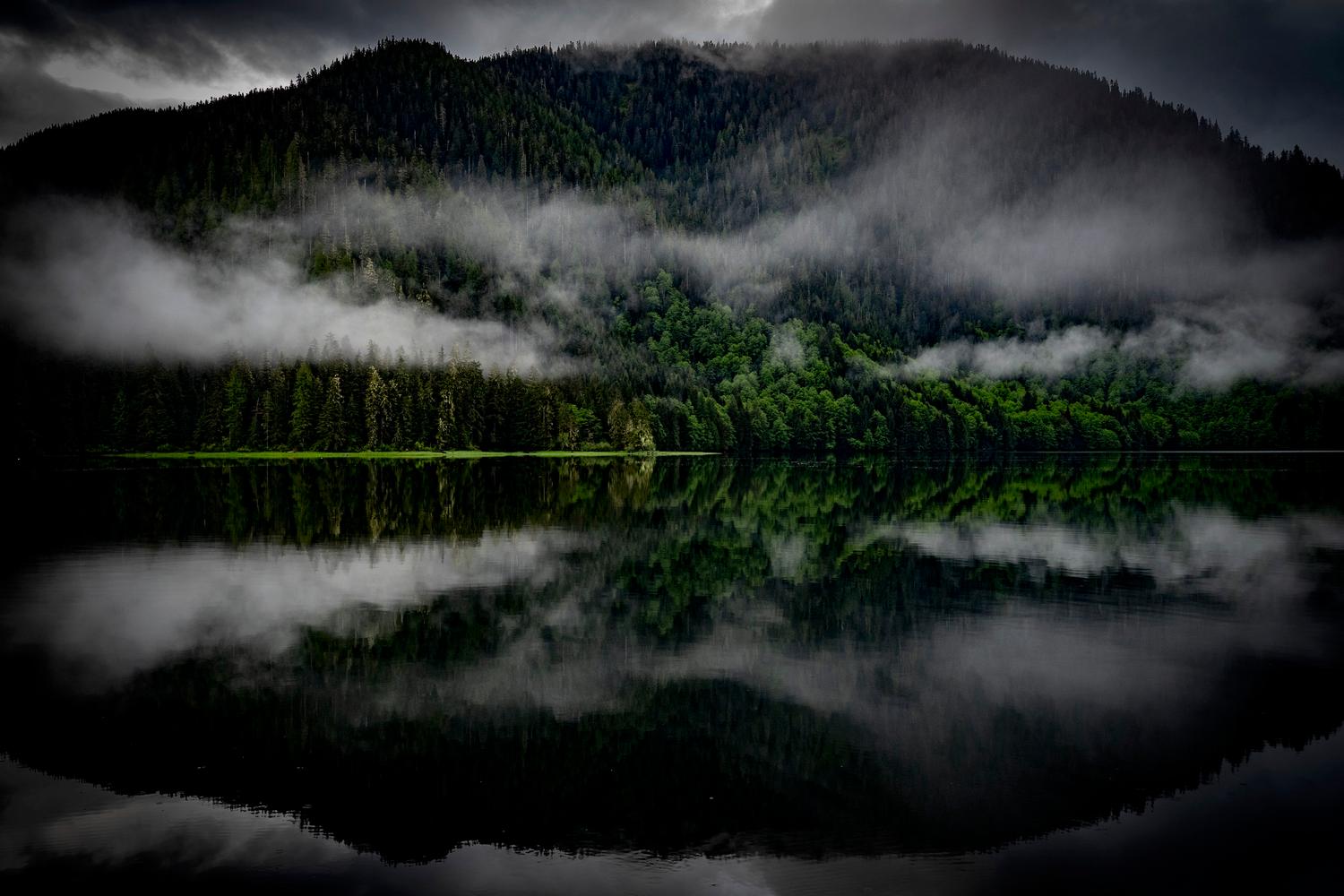
The coastal, temperate rainforests of North America's Pacific Northwest once stretched continuously from southern Alaska to Oregon. Despite decades of logging, invasive species and runaway fires that have reduced these old-growth forests to a fraction of their original size, they still hold some of the world’s highest concentrations of irrecoverable carbon.

"Irrecoverable carbon" refers to the vast stores of carbon in nature that are vulnerable to release from human activity and, if lost, could not be restored by 2050 — when the world must reach net-zero emissions to avoid the worst impacts of climate change. Learn more about this critical research.
In 2024, Ami Vitale traveled throughout British Columbia, Canada, to get a first-hand look at some of the continent's last-remaining pockets of temperate rainforests — and meet some of the forest's unsung protectors. During her travels, Vitale spent time with Marilyn James, matriarch of the Sinixt First Nation, as well as wildlife biologists Wayne McCrory and Amber Peters from the Valhalla Wilderness Society.
The photographs below were documented by Vitale during visits to the Khutzmeymateen Grizzly Sanctuary, established in 1994 as Canada's first grizzly bear sanctuary, and the Rainbow Jordan Wilderness, a diverse ecosystem of ancient trees that the Valhalla Wilderness Society is currently working to protect from logging.
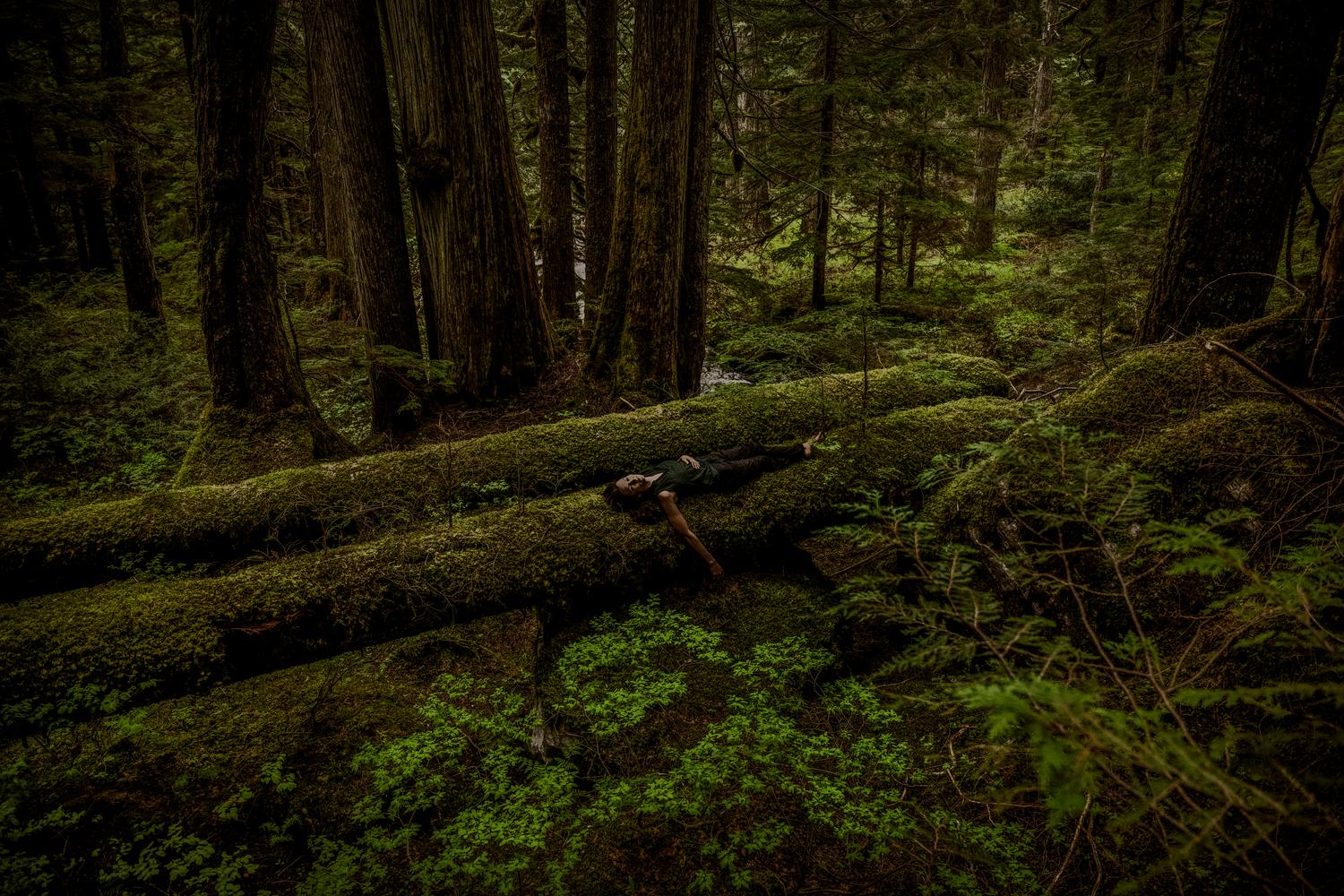
Amber Peters, a young conservationist, inside the Rainbow Jordan Wilderness in British Columbia, Canada. She has emerged as a powerful voice for the wilderness, embracing technology and innovative strategies to further the mission of preservation. She is building bridges between the wisdom of Indigenous traditions and contemporary advocacy, pushing for solutions to ensure that these last forests remain a sanctuary for all forms of life—a place where indigenous wisdom resonate alongside the hopeful calls of new conservation leaders. For it to exist, it will be shaped by courage, collaboration, and commitment.

Marilyn James, a respected cultural leader of the Sinixt people, stands inside the Tonal pit house, embodying the rich heritage and resilient traditions of her ancestors. The semi-subterranean architecture symbolizes the harmonious relationship between the Sinixt people and their natural environment, offering insights into sustainable living practices passed down through generations.

The serene expanse of the Khutzeymateen Grizzly Bear Sanctuary is shown in early summer. Established in 1994, it is Canada’s first designated grizzly bear sanctuary. This protected area owes its existence to the collaborative efforts of three conservation organizations, the Valhalla Wilderness Society, Friends of Ecological Reserves, and World Wildlife Fund Canada, working with First Nations, supportive local leaders and provincial authorities to safeguard the valley’s grizzly bears and the ecological and cultural heritage of these lands. By 2008, protection was tripled by the Tsimshian and Nisga’a First Nations, solidifying its significance as a refuge for grizzlies. The large protected area is co-managed by BC Parks and the Tsimshians.

Amber Peters in the Rainbow Jordan Wilderness.
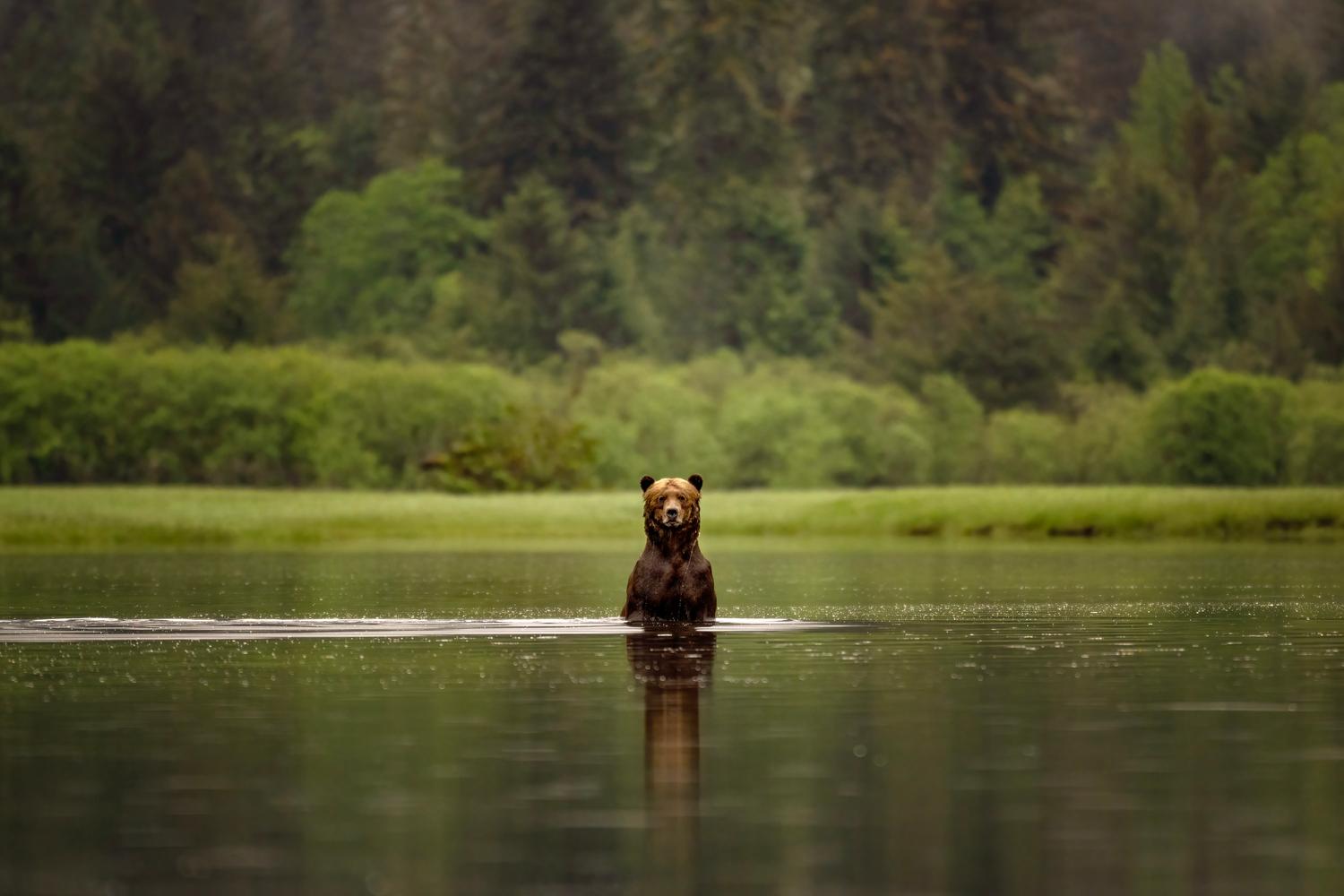
A grizzly bear stands in the waters of Khutzeymateen Grizzly Bear Sanctuary. The park represents the first undisturbed estuary of its size to be protected along the north coast of B.C. The topography of this land and marine sanctuary is diverse, with rugged peaks towering to 2100 meters above a valley of wetlands, old growth temperate rainforests, and a large river estuary. An abundance of wildlife shares the area.
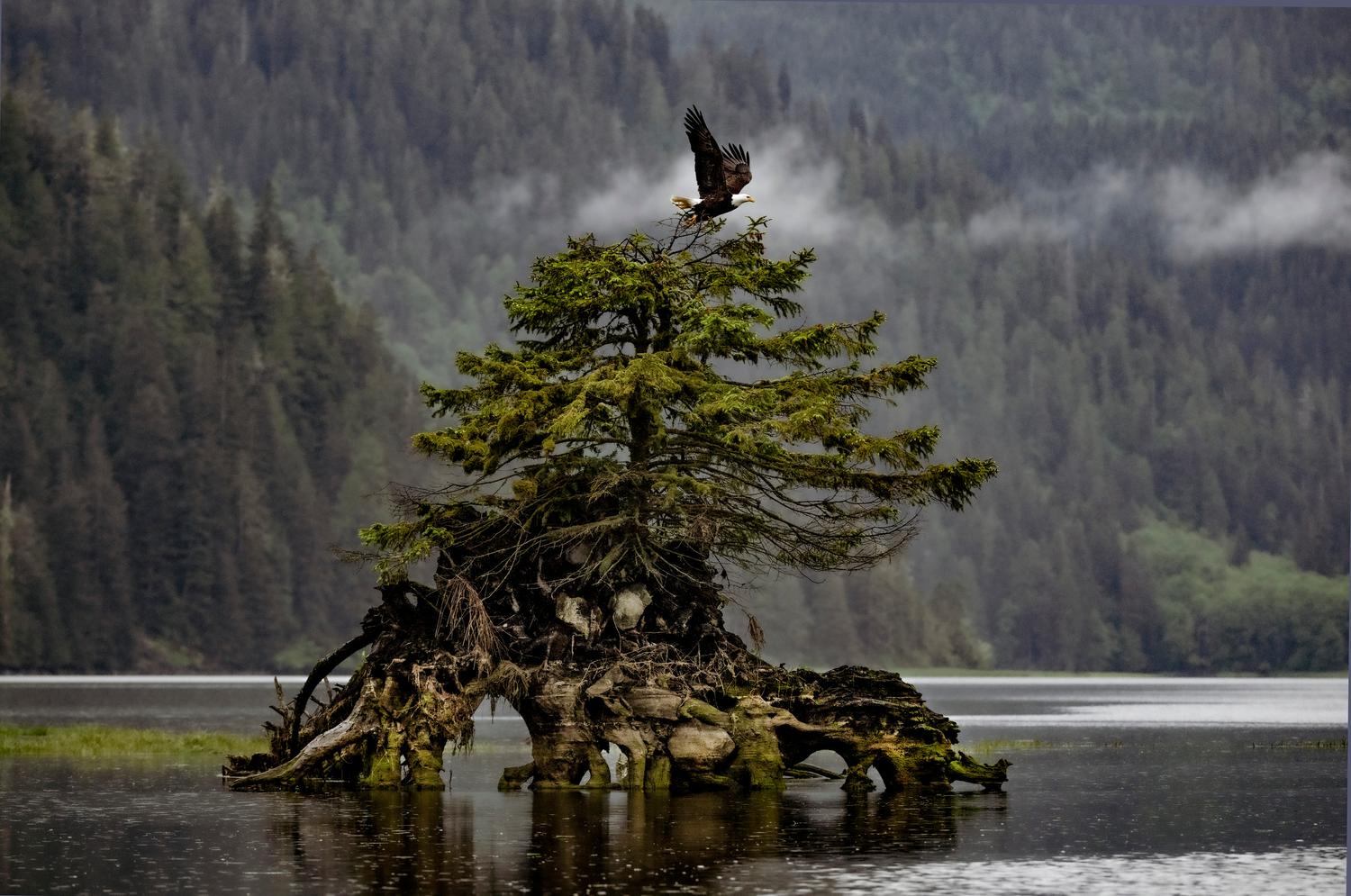
A bald eagle takes off in the waters of Khutzeymateen Grizzly Bear Sanctuary. Over 50 grizzlies frequent the river and the inlet's shores. Other wildlife includes wolves, moose, shorebirds, waterfowl, orca (killer whale), humpback whales and more.
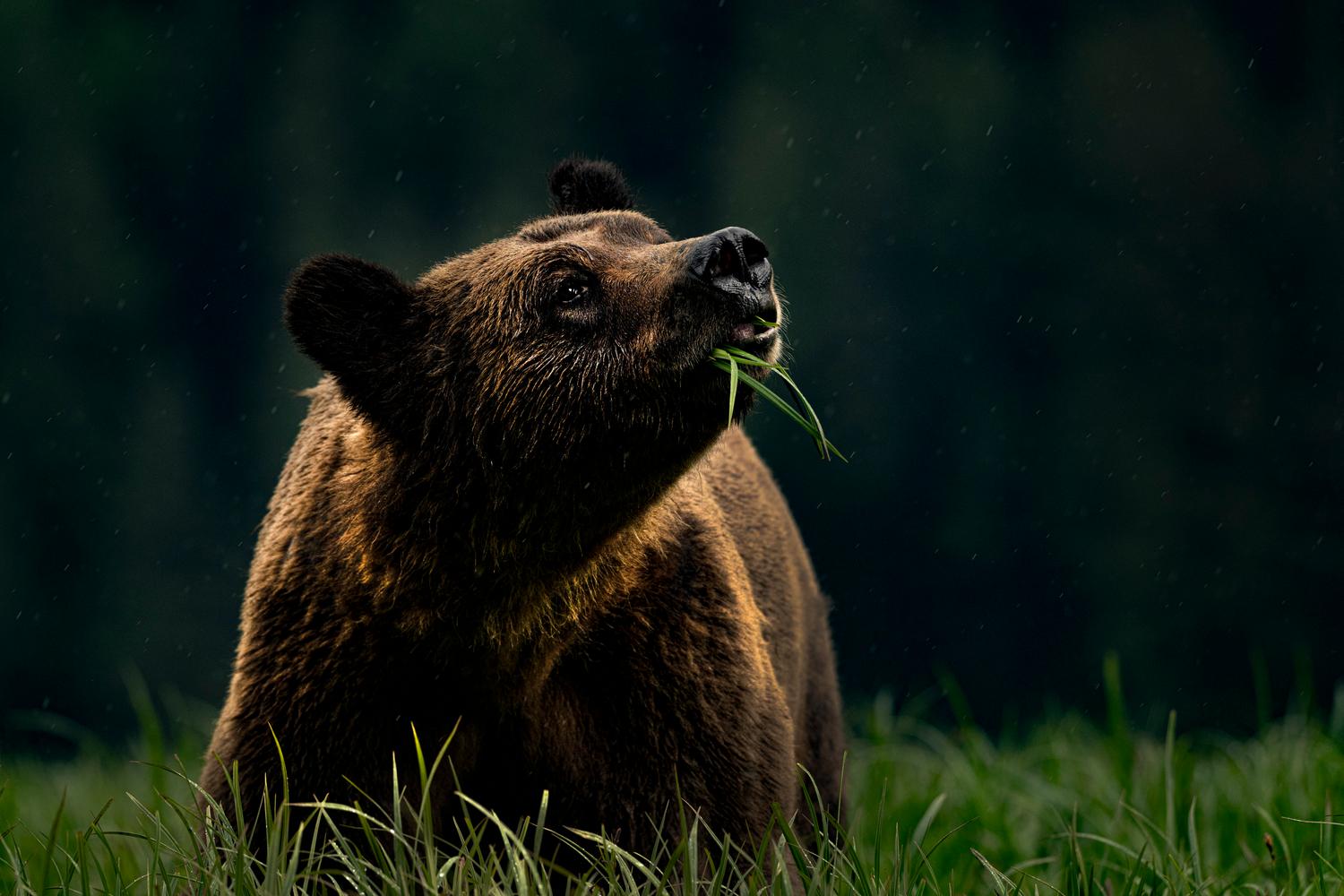
A grizzly bear browses on fresh grass in the Khutzeymateen Grizzly Bear Sanctuary.
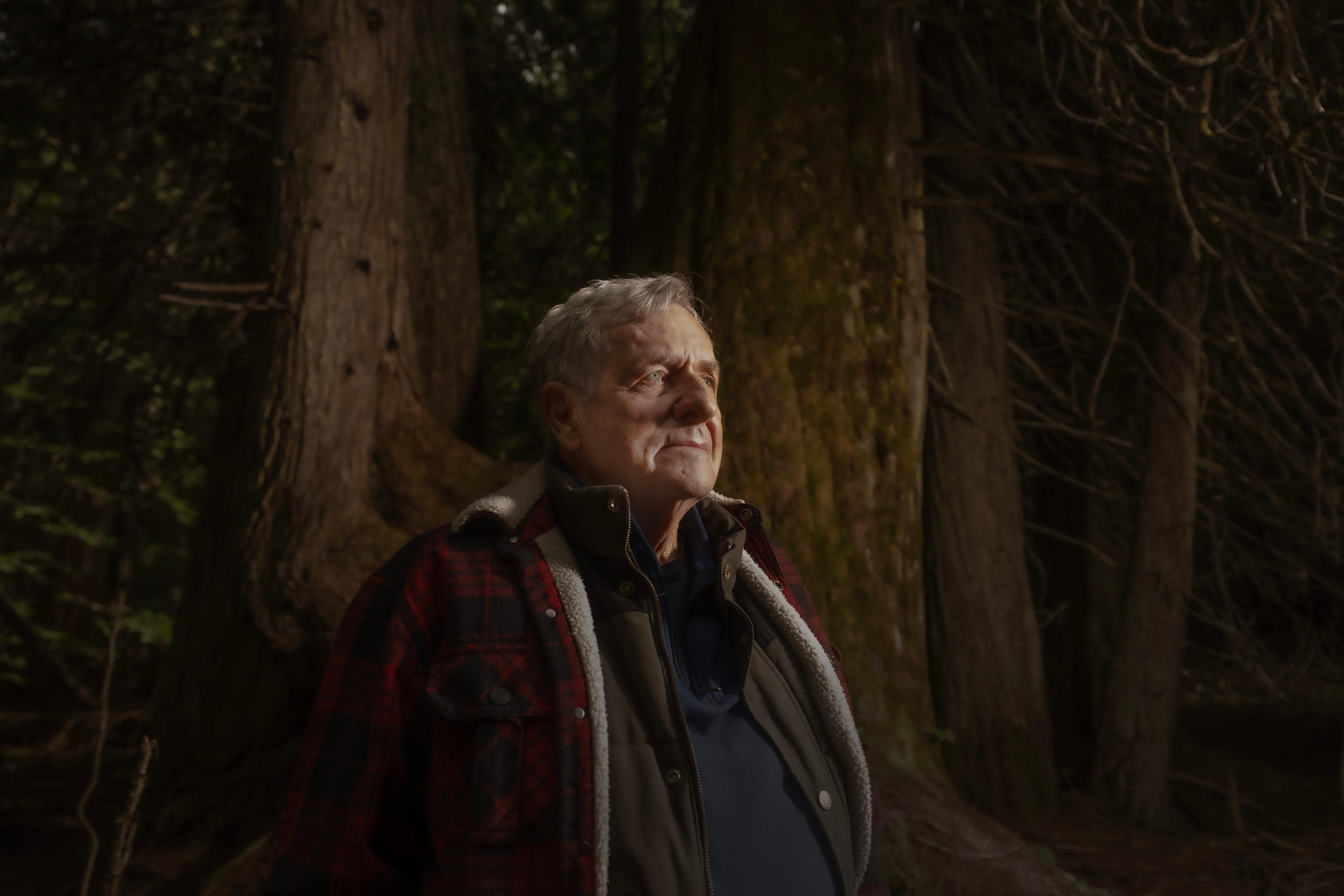
Wildlife biologist and conservation icon Wayne McCrory stands inside a forest near his home in New Denver, British Columbia, Canada. In 1982, the Khutzeymateen was slated for logging when he received an anonymous tip pointing him to the unique valley along the northwest coast. He ventured to the area alongside bear researchers Stephen Herrero and Ralph Archibald. “We were so overwhelmed by the giant trees and the bears,” McCrory recalls. This powerful experience inspired them to mobilize research and advocacy efforts to secure the area’s protection. As they mapped the extraordinary landscape—home to the largest contiguous stand of old-growth Sitka spruce in the world—their awe and commitment grew.
A pivotal moment came that same year when, prior to the province's eventual ban on grizzly-bear trophy hunting, a 185-mile hunting prohibition was established around the inlet after the area was evaluated for logging viability. Over subsequent years, the trio collaborated with high-profile conservation groups, legislators, film crews, the nearby Tsimshian Lax Kw’alaams First Nation, and hereditary chief of the Khutzeymateen Lawrence Helin to galvanize support for safeguarding this vital habitat. Ultimately, their efforts bore fruit: in 1994, during a ceremonial signing attended by the BC Minister of Environment, Tsimshian hereditary chiefs and Prince Philip, Khutzeymateen Grizzly Bear Sanctuary was designated as a Class A Provincial Park. By 2008, further protections extended around the mouth of the inlet, solidifying its significance as a refuge for grizzlies.
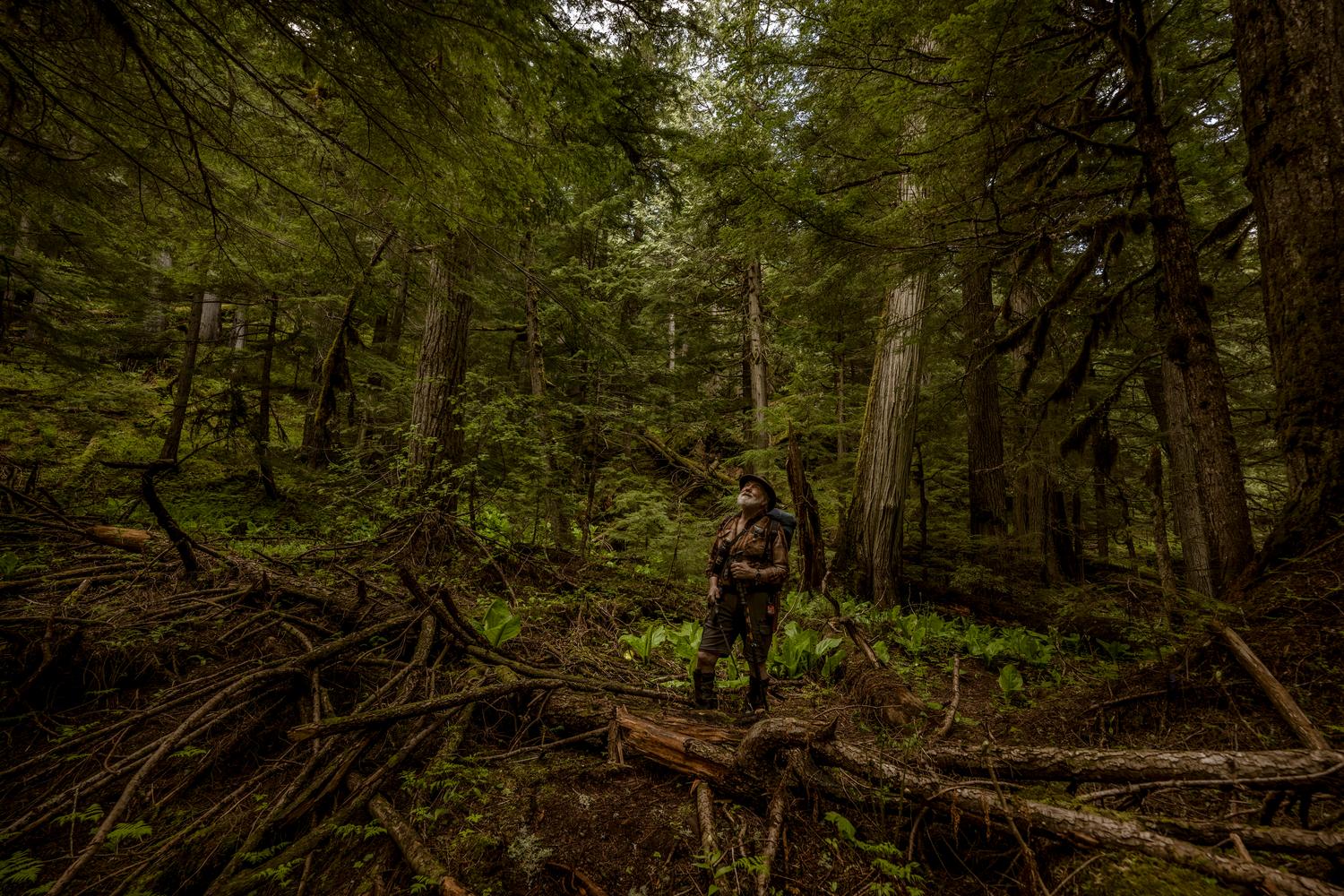
Craig Pettitt inside the Rainbow Jordan Wilderness. With less than 15% of the Inland Temperate Rainforest currently protected—and industrial threats looming—each towering tree here embodies a struggle for survival echoed in the larger fight against climate change.
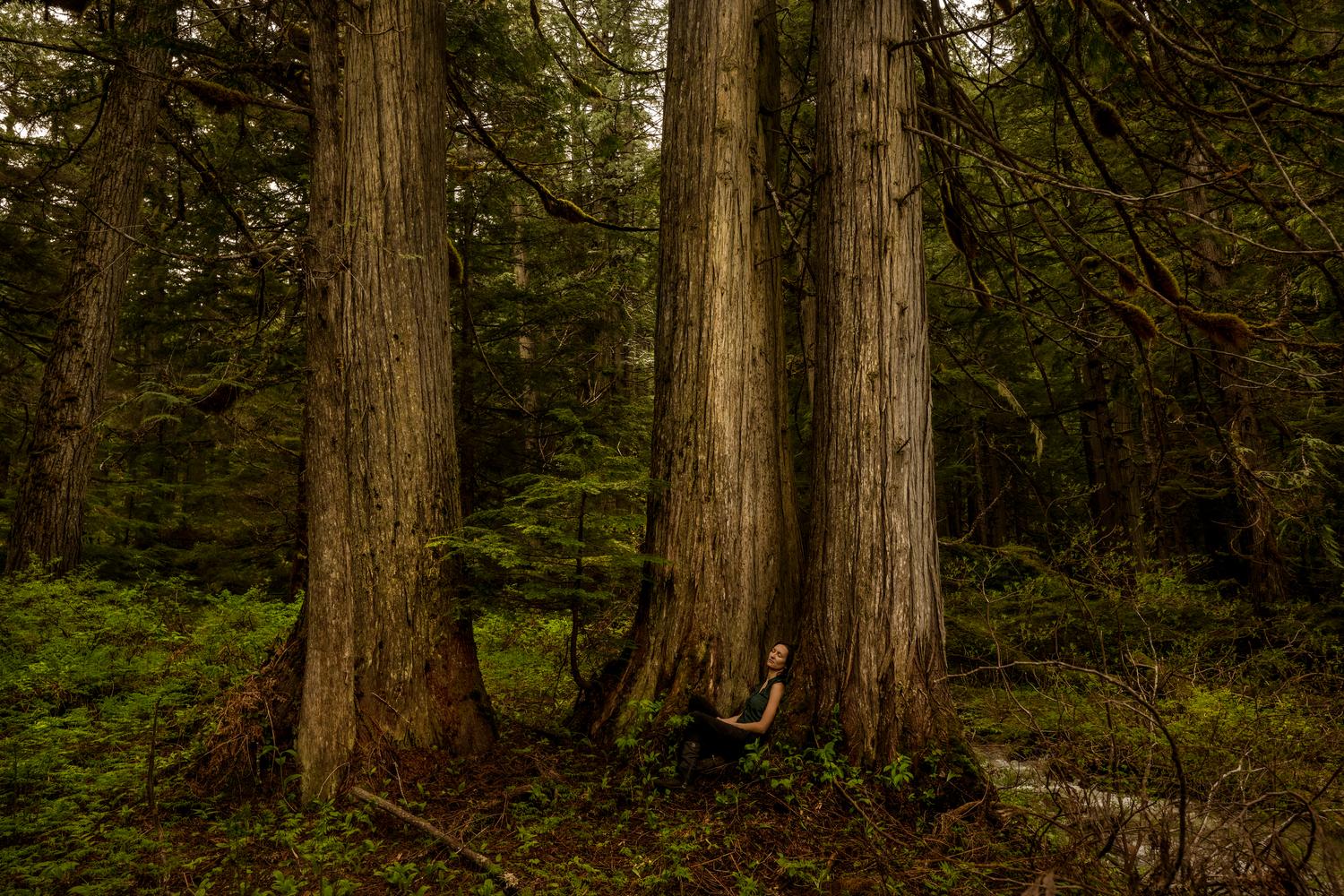
Amber Peters inside the Rainbow Jordan Wilderness. Today, the Rainbow Jordan is still at risk.
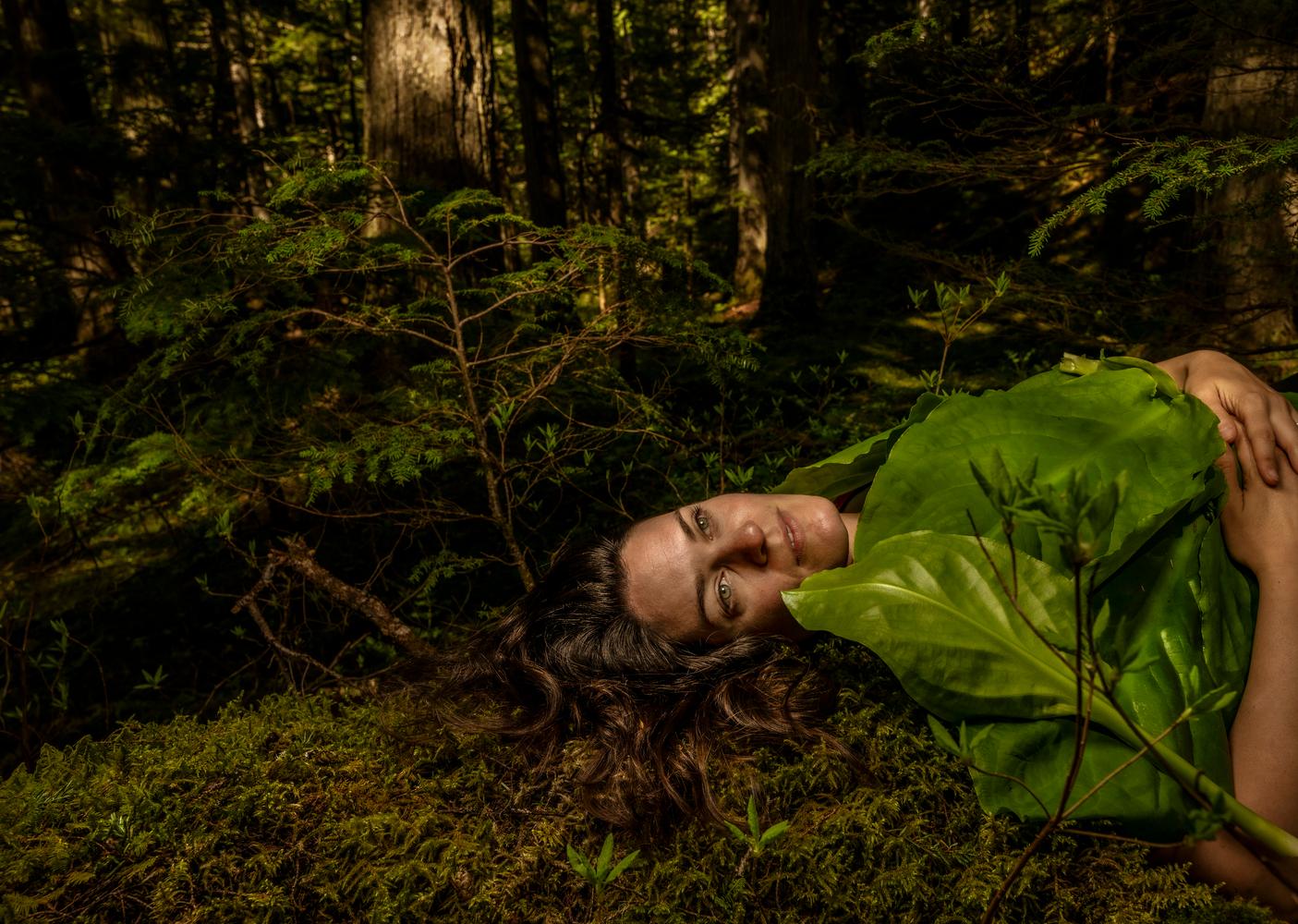
Allie Goldstein rests against a fallen old growth cedar inside the Rainbow Jordan Wilderness. She co-led the research that mapped ecosystems that function as massive vaults of planet-heating carbon, which, if emitted into the atmosphere, could not be restored by 2050 to prevent the worst impacts of climate change.
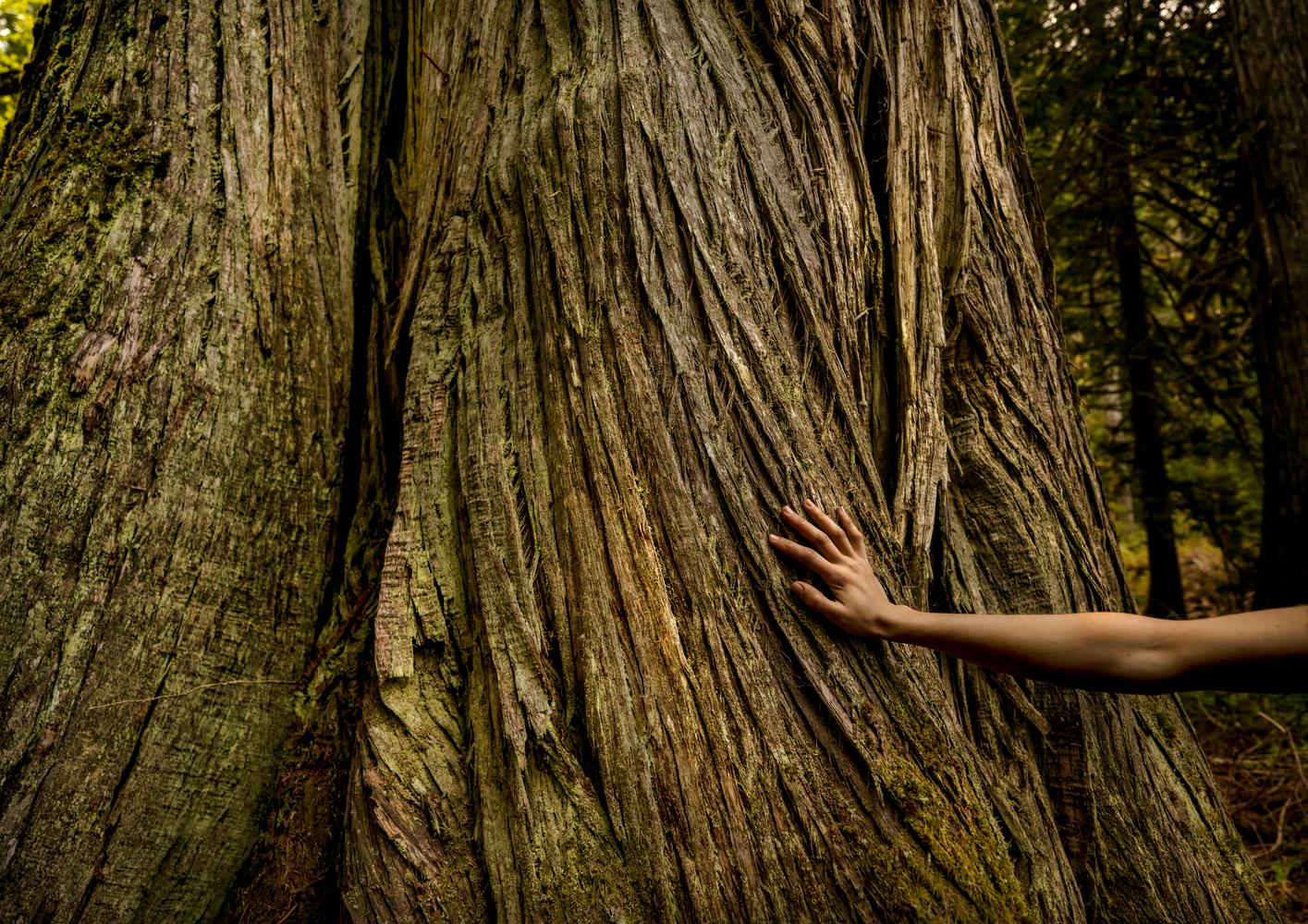
Amber Peters rests her hand on an old growth cedar.